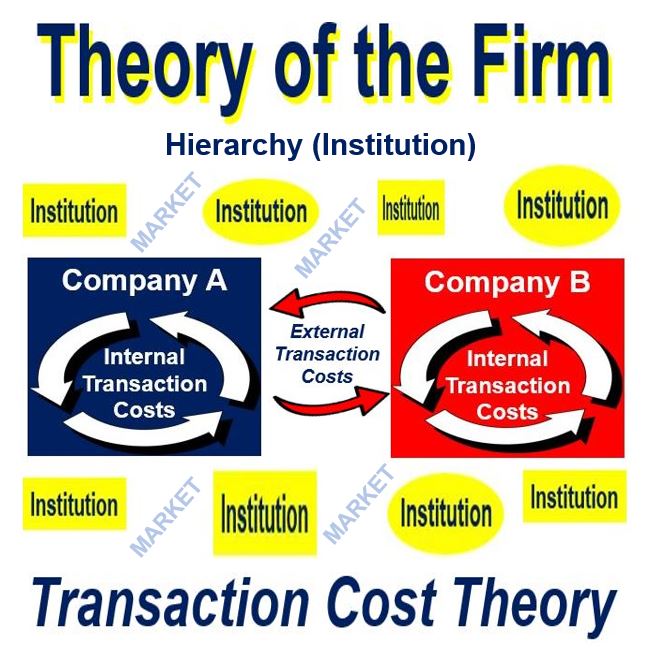
Existing research that uses TCE are presented and future research ideas are also addressed. Economic constraints as suggested by transaction cost economics were positively related to trust between the alliance partners while dependence was negatively. This chapter dissects TCE looking at the domain, definition of variables, relationships between variables and predictions. This theoretical foundation was later refined by Oliver Williamson (1981, 2008) and others (for example North, 1992). He challenged economists to go beyond price and understand costs of using the market in determining where to vertically integrate versus purchase in the market. It was influenced by Ronald Coase's seminal work on the nature of the firm (1937), which offers an explanation as to why organizations use markets, or outsource, instead of doing everything internally (also referred to as hierarchy). TCE was developed in the area of industrial economics. It is widely applied across many business disciplines, including economics. Transaction-cost theory is used to predict which of the three main governance forms of hierarchies, markets, or hybrids would be utilized in organizing economic.



Transaction Cost Economics (TCE) is one of the most commonly applied theories in Supply Chain Management (SCM) and Purchasing and Supply Management (PSM) research today. One of the prevailing economic-based theories of organizational corporate governance is the transaction cost theory.


 0 kommentar(er)
0 kommentar(er)
